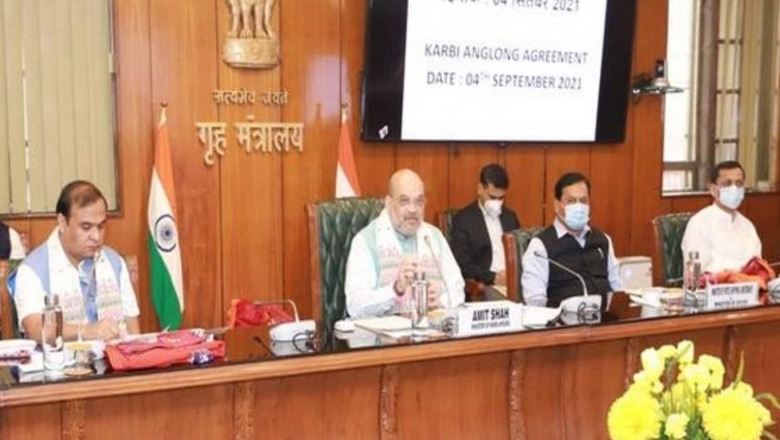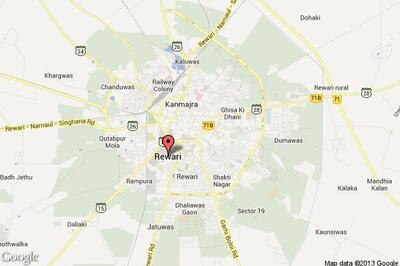
views
The Northeast region is strategically important to India due to its geographical location, which connects the entire region (covering about 8 per cent of India’s geographical area comprising eight states) to rest of the country by just a 23 km-wide Siliguri Corridor. The region shares about 5,600 km-long periphery with neighbouring countries, including 1,000 km of line of actual control (LAC) with a resurgent China, which makes internal stability and cohesiveness of the region imperative for national security.
To ensure security of the borders, peaceful and well-developed rear areas are a necessity for the armed forces because they form the operational and logistic bases during active operations. Unstable rear areas would need additional troops and resources for ‘Rear Area Security’ to guard against sabotage which otherwise could be fruitfully deployed to beef up defence against the external adversary. Satisfied and spirited citizens become stake holders in defence against external aggressors. Friendly relations with neighbours such as Myanmar, Bhutan, Nepal and Bangladesh help in countering the militants through intelligence sharing and joint operations. It is evident that there is a close link between internal and external security and both must function seamlessly in a synergetic manner to achieve the national security objectives.
Perceived or actual threat to tribal identities and rising aspirations have been one of the major causes of many insurgent movements in the Northeast. Some of these insurgencies have been very prolonged and violent like the Naga and the Mizo insurgencies. Several insurgent movements have reached amicable settlement, the greatest success stories being the ‘Mizo Accord of 1986’, which has resulted in Mizoram becoming by far the most peaceful state for decades. Good relations with Bhutan and Bangladesh have substantially contributed to a peaceful Assam due to denial of safe havens to militants across the border. Political leadership in the states have attained a very high level of maturity, yet fault lines within Northeastern states exist, which can be exploited by forces inimical to India’s interests.
Looking at the past, in the period immediately after India’s Independence, most insurgent groups demanded secession from India to set up independent nations which later mellowed down to demanding separate states within the Indian Union. States of Nagaland, Meghalaya and Mizoram came into being as outcome of such demands. In the case of Nagaland, despite creation of a separate state the violence continued. Over the years, peace agreements with insurgent groups operating in Nagaland have brought violence levels under control though the final settlement of Naga problem is still a ‘work in progress’. The issues on the negotiating table are too complex to be resolved in a hurry and at times it is prudent to first establish peace followed by development and then settle the social, identity and emotional differences.
In order to establish consistency in their position during negotiations, the government of India in the recent past has not ceded to demand for separate states but have instead agreed to giving autonomy to such geographical areas or districts within the respective states by reorganising them into autonomous councils thereby devolving political and economic power giving them stake in the development of their areas. Devolution of economic powers may not always result in benefits reaching the masses if the development funds are not utilised in a fair and transparent manner thus compromising success of such accords.
Several autonomous councils exist in India especially in the tribal areas, which give the local tribes a sense of security as also authority to plan and execute development projects in their area. Such agreements also give a sense of achievement and a reason to the tribal leadership to end the agitation. In addition, benefits of development and creation of some jobs at the local level add to the stature of the local leadership.
Another reason for these agreements is a sense of tiredness on the part of the agitating groups whose leaders often grow old and realise the futility of armed struggle. The current Karbi Anglong agreement between the Union government, the government of Assam and the KAAC comprising Karbi Anglong People’s Liberation Army, United People’s Liberation Army, Karbi People’s Liberation Tigers, Karbi Anglong North Cachar Liberation Front and Peole’s Democratic Council of Karbi Longri has been the outcome of prolonged negotiations. Many insurgents of these organisations have laid down arms recently as part of build up to this agreement. It aims at ending violence and ushering development of the Karbi Anglong and NC hills which have immense economic and tourism potential. To achieve this, a development package of Rs 1,000 crore has been included in the agreement by Central government.
Prolonged periods of insurgency in various states of Northeast have resulted in a vicious cycle of violence, sufferings of locals who get sandwiched between the security forces and the militants, lack of development due to corruption and absence of accountability of the administration. The region, the people and the country suffer because of this endless cycle. With easier access to information and integration with the rest of the country, the citizens now understand the importance of better quality of life for themselves and a promising future for their children thereby often forcing the tribal leadership to end struggles and violence.
The Northeast insurgency cannot be treated as one homogenous problem. Profile and causes of insurgencies within the Northeast are as diverse as India so the “one shoe fit all” solution is not a possibility. Each problem needs a tailor-made solution, which the government of India and the respective state governments have realised over the years and are currently pursuing. Therefore, establishing rule of law through people-friendly security operations followed by holding systematic negotiations with stakeholders of each problem will surely lead to peace in the region, which sets the stage for development and accountability of the administration.
There is an urgent need for infrastructure and jobs comparable with rest of the country. Peace and well-developed infrastructure will give a major impetus to investment in tourism, local businesses, manufacturing and agriculture. Needless to state that despite the diversity, economic development is one common factor which can contribute immensely towards the national security through prosperity of the local population.
Success of such agreements lies as much in their effective implementation as in concluding them. Union and the state governments possess the wherewithal to hold all stakeholders accountable to deliver on terms of the agreements so that it leads to better quality of life and economic development of the affected citizens.
The author was head of Army Service Corps. He is a distinguished fellow at United Service Institution of India and a motivation and leadership speaker. The views expressed in this article are those of the author and do not represent the stand of this publication.
Read all the Latest News, Breaking News and Assembly Elections Live Updates here.


















Comments
0 comment